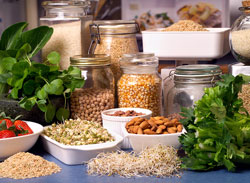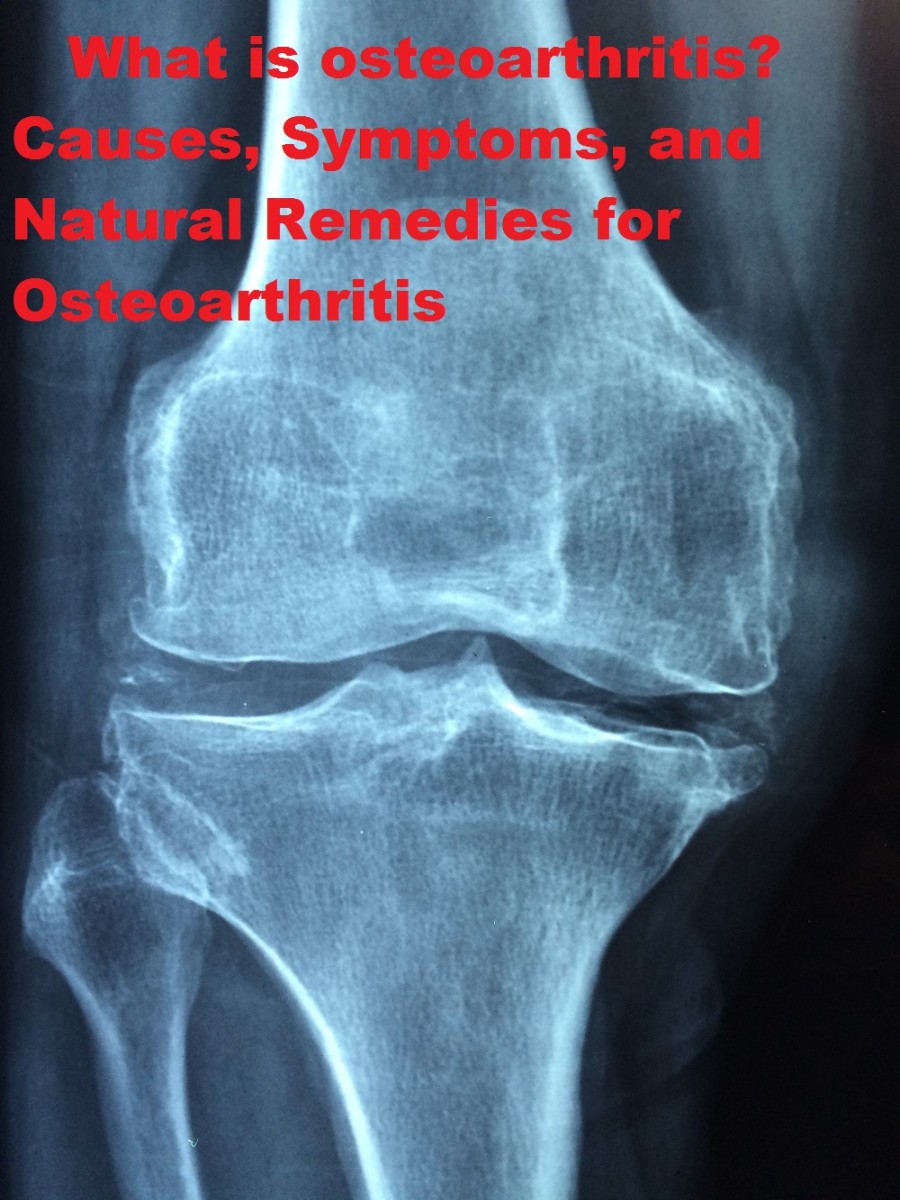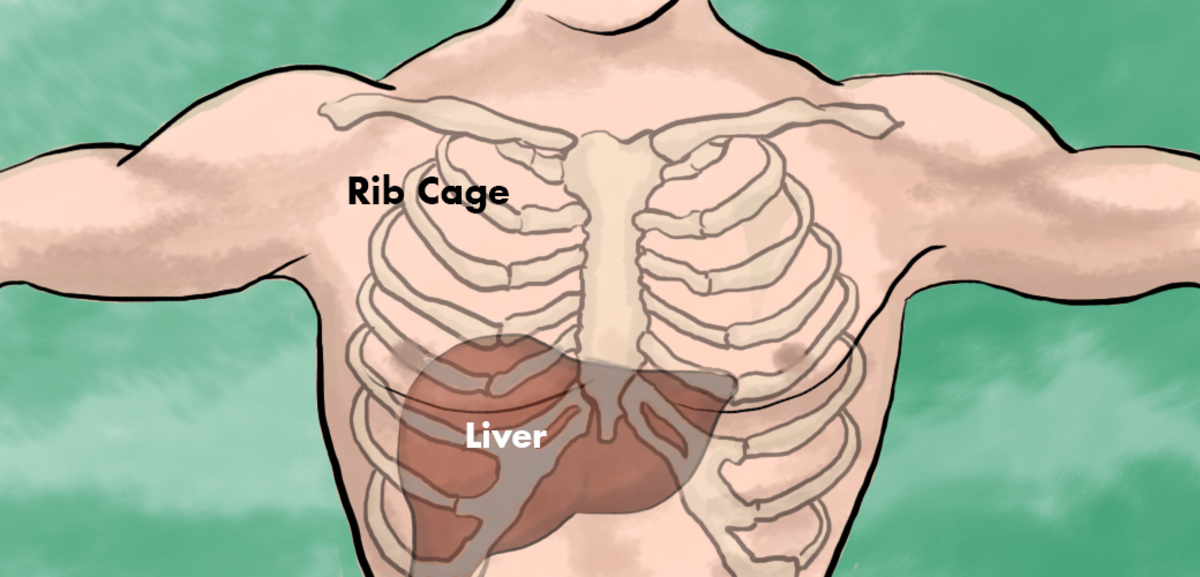Relieve Arthritis Pain With Food

There are over 100 types of arthritis, though only about a dozen of them are considered common. Research has been primarily directed at the more common forms since they affect the most people. Besides Rheumatoid Arthritis, the conditions of Osteoporosis, Carpal Tunnel Syndrome, Juvenile Arthritis and Restless Leg Syndrome are perhaps the most widely recognized. Up until a few years ago, the medical profession focused on medicating with pharmaceuticals to alleviate pain as a way to treat those who suffer the condition. Today we know that diet can and does affect our body's overall health as well as helping in managing specific illnesses.
Food and weight can have a huge impact on the progression of arthritis. They also can make the difference of whether you're able to move about with minimal pain and stiffness. Being overweight puts extra stress on the joints and increases the wear and tear. For each pound lost, 4 lbs of stress are removed. There's more than the added stress to be considered. Body fat is metabolically active and produces hormones and chemicals that increase levels of inflammation. Just losing weight will cause you to automatically reduce the inflammation at the root of your arthritic pain.
You can gain quite a bit of control over the pain you experience just by increasing intake of certain foods while eliminating others. These specific food groups increase inflammation, and also add weight: Saturated fats, Transfats, and Simple & Refined Carbs.
All processed foods should be eliminated from the diet. Such foods contain two problem ingredients...refined carbohydrates and sugars. The body reacts to refined carbs in the same manner as sugars. They both cause spikes in blood sugar, which researchers say immediately causes inflammation. Glucose spikes also create free radicals that travel through the body attacking cells.
Processed foods also contain refined vegetable oils full of the inflammatory omega-6 fatty acids. Before so many processed foods came into vogue, humans were eating an equal number of omega-6's as the omega-3's which are anti-inflammatory. Studies now indicate we're eating about 20 times more omega-6's, with some people consuming as much as 50 times more!
The Worst Refined Carbohydrates Found In The US Diet
-
processed white bread
-
all beverages containing sugars (real and fake), including soft drinks and sports drinks
-
any food with high-fructose corn syrup or other added sugars
-
white rice and white flour pastas
-
frozen desserts
-
packaged and processed cookies, cakes, and doughnuts
-
jams or jellies with sugar added
-
chips and crackers
-
concentrated fruit juices and those that are highly processed
-
boxed breakfast cereals
*** Canola oil has been considered to be a better choice of oils because it's got a better
balance of the omega oils. However, it oxidizes very easily and the result is free radical
production that damages joints.
It's not easy to eliminate so many foods that are so well loved. What's the answer, then? Putting a limit on the amount being consumed will go a long way in easing your pain, but there's another, just as healthy way to eliminate the “owie's”. Add more of the foods that are healing. Not only will they help eliminate pain through a reduction of inflammation, but they'll also help you to fight those awful cravings for the bad foods you find yummy.
Recent studies have proven the healing ability of certain foods to stop joint pain and subdue inflammation, while protecting joint tissue from destructive free radicals. Foods high in magnesium can even repair damaged cartilage. The foods you'll want to incorporate into your diet as replacements for most of the “no-no” foods are those high in vitamins A, C, and E, in addition to those with high magnesium content and omega-3 fatty acids.
Fruits (high in vitamin C)
-
Strawberries
-
Cataloupe
-
Kiwi Fruit
-
Papaya
-
Peaches
-
Apples
-
Mangos
Vegetables (high in vitamins A and C)
-
Collards
-
Spinach
-
Squash
-
Brussel Sprouts
-
Sweet Potatoes
-
Bell Pepper
-
Broccoli
Fish (Omega-3's and vitamin E)
-
Salmon
-
Herring
-
Mackerel
-
Sardines
-
Tuna
-
Trout
Nuts and Seeds (Omega-3's and vitamin E)
-
Walnuts
-
Sunflower Seeds
-
Brazil Nuts
-
Linseeds
-
Almonds
-
Pumpkin Seeds
Anti-inflammatory Foods
-
All lentils
-
Chick Peas
-
Apples
-
Brown Rice
-
Whole wheat bread

High Magnesium Foods
- Black beans
- Broccoli,
- raw Halibut
- Peanuts
- Okra
- Oysters
- Plantain
- Rockfish
- Scallops
- Pumpkin/Squash seeds
- Soy milk
- Spinach, cooked
- Tofu
- Whole grain cereals
- Whole wheat bread
Why not top off all your cooking efforts with spices and herbs that have also proven to be anti-inflammatory? Researchers have discovered that black pepper reduces the perception of pain and reduces inflammation. Research presented at the British Pharmaceutical Conference (2009) showed that two types of basil (Ocimum americanum and Ocimum tenuiflorum) reduced joint swelling by 73% in less than 24 hours. In addition to the two listed, there are thirteen more top anti-inflammatory spices and herbs: cardamom, cayenne chamomile, chives, cilantro, cinnamon, cloves, garlic, ginger, parsley, nutmeg, rosemary, and turmeric. Ginger and turmeric rest at the top of the list for their strength.
When it comes to choosing an oil for uses in cooking or making dressings, condiments, etc, you'll want to use extra-virgin olive oil. Researchers have found the properties of this oil to be similar to NSAIDS. 3 ½ tbsp per day provides the same relieve of about 200 mg ibuprofen. Since this amount also equals 400 calories, it's best to use it in place of other fatty ingredients like butter.
Following a special diet is easier said than done. Restaurants and friends don't always have offerings that match your special needs. However, when it comes to eating to repair arthritis and reduce the pain associated, there is a wide range of foods from which to choose. The most important thing to remember is to eat more of the good foods than those that aggravate the condition. A complete elimination is always best, but if you only manage to remove processed foods from your diet, the battle is halfway won.






